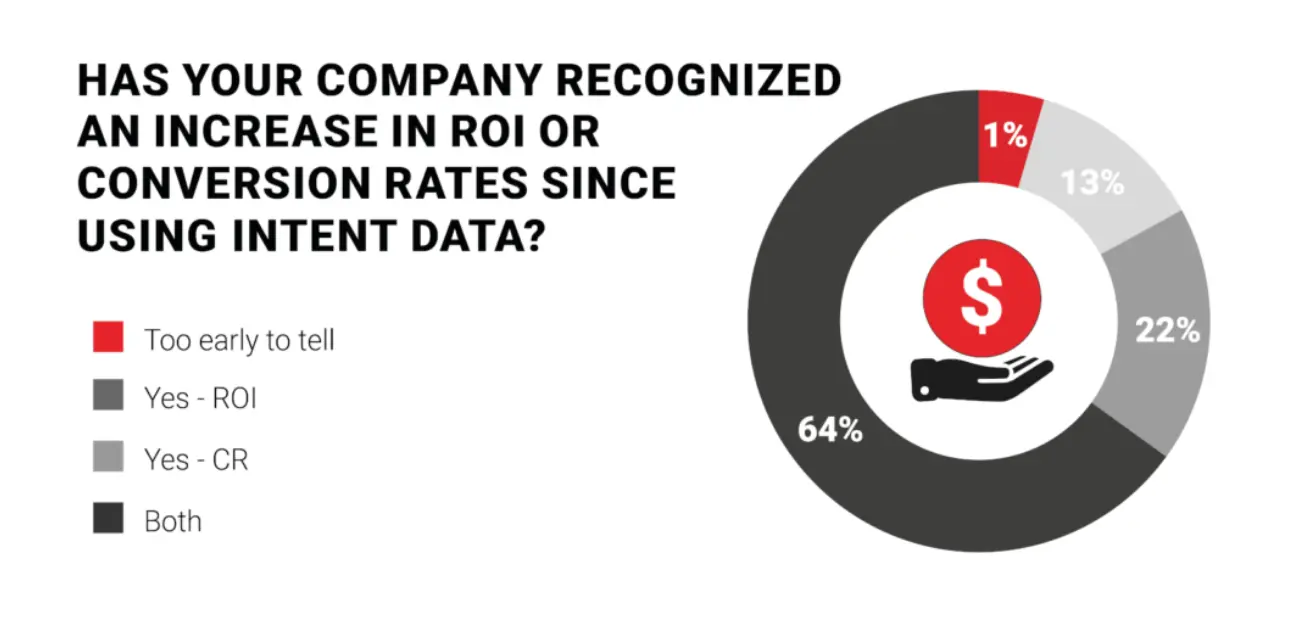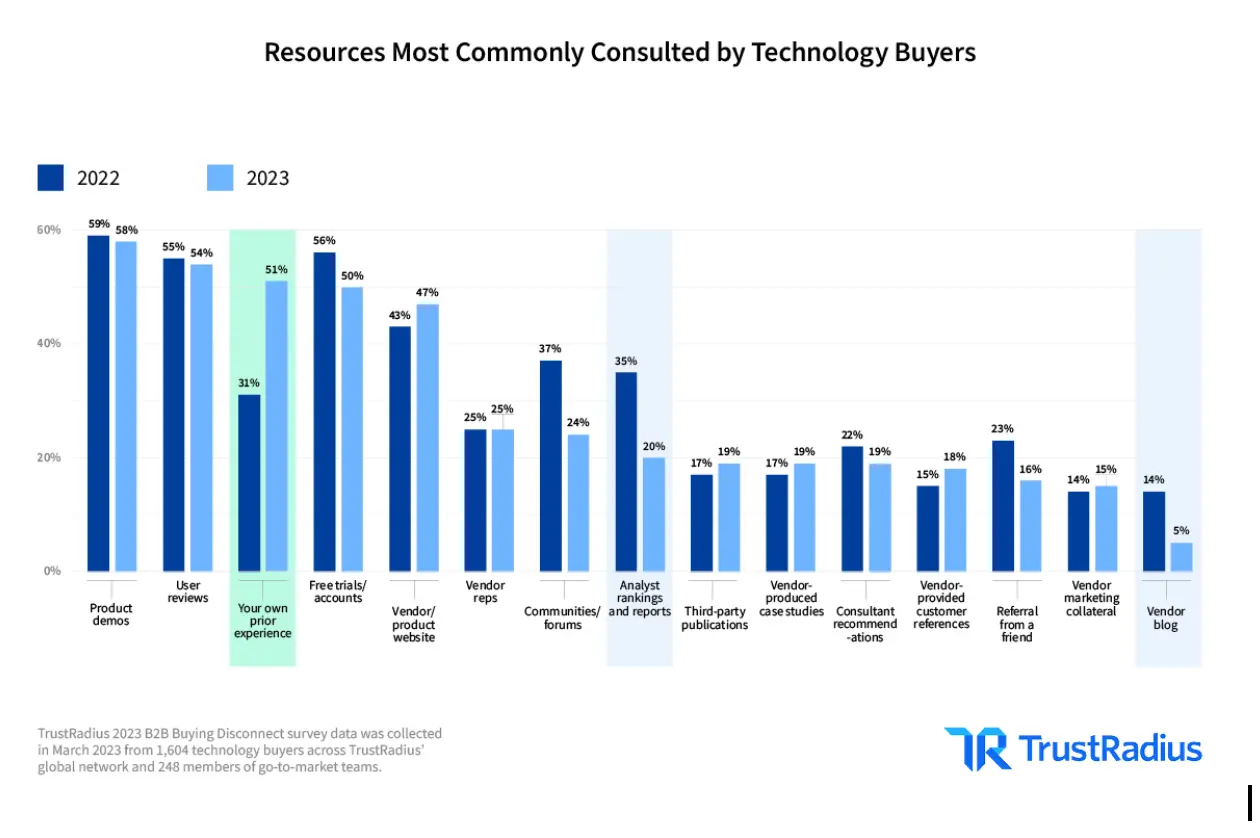If you run a SaaS company (or to be honest, any company) you’ll know that user intent is the core of what brings company and client together. Business and customer, etc. This is because clients are looking to solve very specific needs when looking for such companies.
That’s why the methods by which you gain user intent data have to be as pragmatic and actionable as possible, as this is ultimately what will keep your business on the up.
Data is how this is determined, but there are reliable and unreliable methods to mine this data. In short, non-intrusive methods are best as they won’t annoy the ever-living heck out of the user.
Let’s go deeper.
The Definition of User Intent
User intent is super simple to get but is all-encompassing. It’s the goal of the user when they fire up Google. Here are the 4 key user search intent types, which reportedly make up 99% of user intent.
- Informational: Simple. Informational user intent is when a user is seeking information. “What’s the capital of England” is an informational answer, and direct answers should be what comes up.
- Navigational: This is when a user looks for specific directions, such as a “Facebook login page”. The user is looking for a particular part of the website, and not general information about it.
- Commercial: This is a user looking for details for a potential purpose. A search like “top 3d printers” is an example of commercial user search intent. It implies a desire to know more about 3d printers, with a potential intent to make a transaction later.
- Transactional: Transactional intent is similar to commercial, but also different. An example is “buy Apple ipad pro 11 inch”. Where commercial implies an intent to find more information about a product, transactional is centered around an imminent intent to buy.
There are others such as local and navigational brands, but the 4 above pretty much cover the ground.
When creating content, whether it’s landing pages, blogs, product listings, videos or product promotion, all of which are in promotion of your SaaS platform, your task is to match the user intent to show that as far as the user needs to go, you got them covered, and therefore, convince them to go with you.

Why It’s Vital for SaaS Companies
Understanding user intent is vital for SaaS companies. It’s one of the foundational aspects that fuels website UX design, copy, and the presentation of your business via Google Business Profiles and your SEO optimization.
That’s why your user intent SEO has to be dialed to the finest point, and understanding your target user is key to this.
Your first question will doubtlessly be whether doing this increases ROI, and the answer is short. The one with three letters.
Note how the dominant user intent stat relates to ROI. The second biggest piece of the pie claims that conversion rates have also increased. That’s a good indication of user data’s effectiveness.
But, how can this be achieved?
Key Types of Intent Data
User intent is indicated by a few different data types, all of which can be leveraged to optimize your campaigns and refine content of all kinds to match the user intent.

- First-party Intent Data
First-party data is sourced internally, meaning it comes from your primary sources and via any mechanic that you choose. After all, it’s your company. You decide. It can be done actively through behavioral assessments, surveys, and the like. Or passively. The latter is happening all the time. It occurs when a user visits your site, gets in touch, or fills out the mailing list form.
Of course, you then have to analyze and action the data to tell whether it comes from an ideal customer profile, to know whether your company is attracting the right people.
Examples include behavioral assessments, website visits, search queries, customer contact, and purchase history.
- Second-Party Intent Data
Yes, second-party data exists. It’s seldom used but can be practical. Second-party data is the first-party data of a source other than your own. Sources such as TechTarget collect second-party data, and you can buy the data back from such companies.
- Third-party Intent Data
Third-party intent data comes from insights gathered from external sources across any number of touchpoints, from other websites than your own, to social media channels and your extra-curricular content platforms. It’s useful because it can get the user interested in your product earlier on in the funnel, and potentially without even discovering you directly.
Third-party intent data spawns from data conglomerates. What happens is that the conglomerates buy the intent signals from a range of websites and then use this data to make money.
The Downside of Not Understanding User Intent
So, imagine you need direct information for a functional purpose. Naturally, you take to Google to start your search. Then, what comes up? Entertaining content that isn’t informative. Programs and services that do not address your needs.
This is going to leave a bad impression, and you will forever remember each of the companies that popped up in your recent search history, as a bad product.
That, in a nutshell, is the dystopian Hell that comes from not understanding user intent.
User Intent Data Collection Methods
Yes, there are a lot of ways that you can track and optimize for user intent. But that doesn’t mean every one of those data collection methods is accurate and useful. There are different ways of doing this, some of which are unintrusive, others which can be annoying as heck for your users.
Traditionally Intrusive Methods
Most companies do the following methods wrong:
Surveys
These are usually questionnaires or forms that are presented to users while they are using your SaaS app, often in the form of overlays, inline forms, or pop-ups. In short, they’re annoying, direct the user away from the app and customer path, and dampen the whole UX.
In-app feedback
In-app feedback usually happens, well, while the user is using the app, i.e. right as they are in the middle of something. This is pretty self-explanatory. It gets in the way of a user’s task, and if this is a new user, they are likely to downrate their user experience. Plus, it directly interferes with the user navigating your SaaS product, which is the whole point of its existence.
The Trouble With These Methods…
The trouble with intrusive forms of user intent data collection is that it is not reliable. Chiefly because it takes the user out of their element when browsing your websites or using your SaaS products, and is likely to prompt either no response or an inaccurate one.
Let’s be honest, we all come into contact with them, and how often do we follow it through? Even when you do, it’s a safe bet you do it quickly to get it over with, which is equally unreliable. That’s why it’s better to gather user intent data from Non-Intrusive methods.
Non-Intrusive Approach
The best way to collect is these to do so un-intrusively with native and small features that don't distract from your UX. Present them at the right time, with the right context!
If you send these pop-ups and requests as interstitials, or during a core user flow, you are bound to frustrate and annoy.
You need to be targeted and intentional with your in-app messaging and feedback requests. You should build audiences and segment your messaging for each of them, while also keeping an eye on their responses (are they rage clicking, or quickly exiting, or engaging highly, etc.? )
There's also another set of ways to gather user intent data with behind-the-scenes tactics!
- Behavior Analytics
This is when you track and analyze user interactions on your website, app, or SaaS platform. It monitors mouse movements, clicks, scroll-depth, and other on-site activities.
This is a transparent portal into how users navigate your platforms, which pages they go to, and how long they spend there. This is very informative indeed, as it gives you data relevant to user preferences. Plus, it does not require active participation.
- Heat Mapping
This is a visual display method that highlights and lowlights the parts of the webpage that get the most engagement and attention. They use color gradients to indicate these elements, as seen here:

The different colors indicate the intensity of user experience, red being the hotspot (high engagement) and cold spots indicating lack thereof. Simple really, but it declares very clearly where the points of interest and common navigation paths are. The cold spots show you where you can improve the UX.
You can safely assume that the hotspots match user intent more than the coldspots.
- Session Recordings
Session recordings are when you capture and replay user sessions on your website, apps, and SaaS platforms. It’s even more informative than heat-mapping because it shows the entire session from start to end, and lets you play it back over and over again, Sam.
Real-time user behavior reveals pain points, confusing areas, and elements that might need enhancement. Full Story is the most popular session recording platform, but you can also use Posthog, Hotjar, LogRocket, and Highlight.
Wrap-Up!
In review, understanding user search intent is the key to the optimization of website UX design, copywriting, and the overall layout of your company profile. Aligning your content with user intent will enhance the user experience and up the chances of turning those invisible eyes that are browsing through your website, into actual customers.
For that reason, it’s more informative to get data in a non-intrusive fashion, as this will tell you more about your customer base, and so, we would highly recommend analyzing user behavior, and leveraging heatmaps, and session recordings to determine how users interact with your business.
This will give you a clear idea of what to action.

















